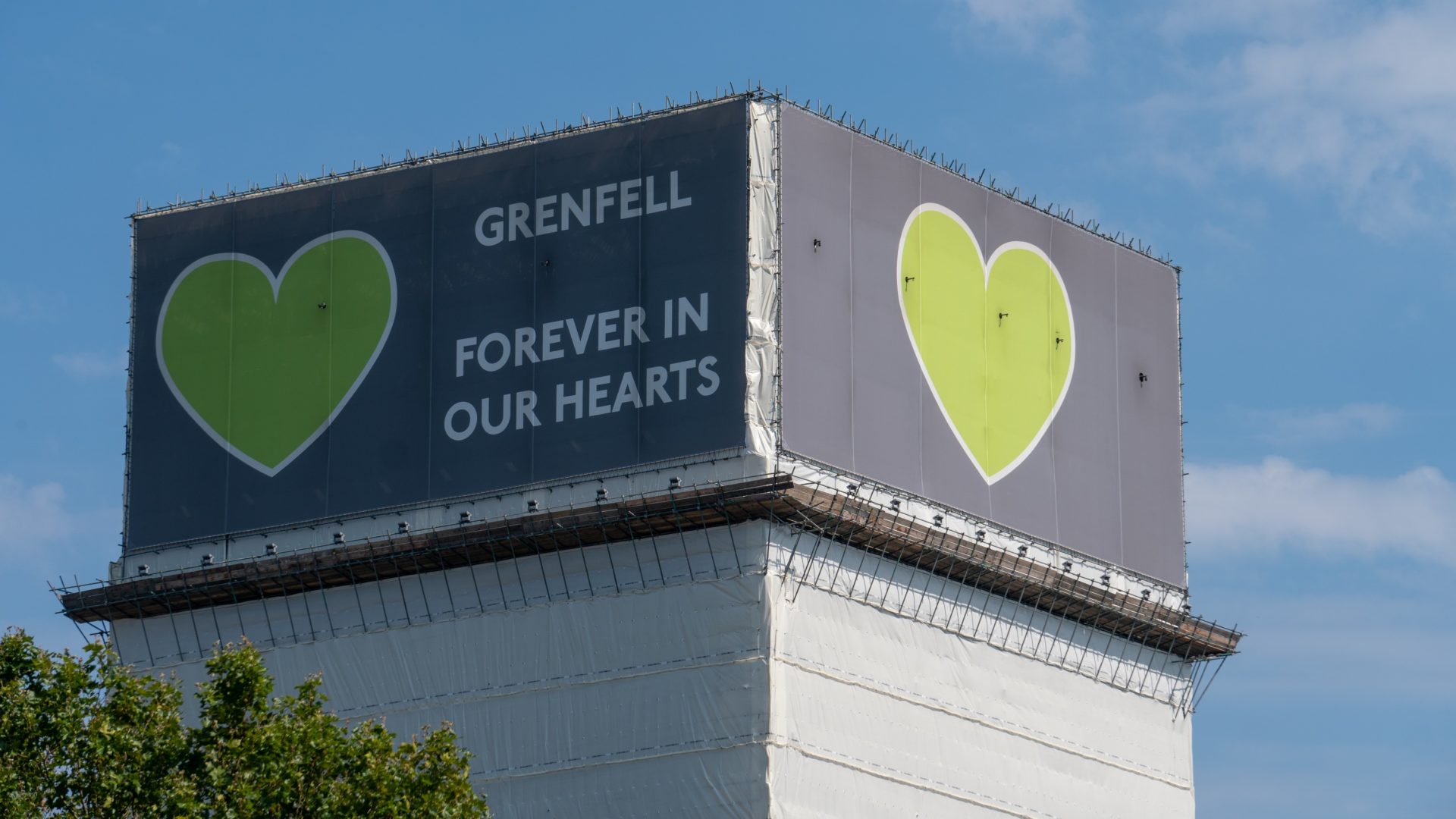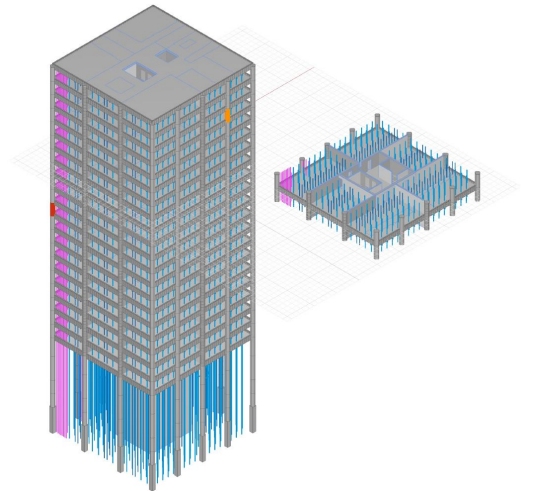
More robust propping to support Grenfell Tower will have to be installed this summer as the building’s condition worsens.
The news came as independent engineering advice to the government from Atkins warned that Grenfell Tower should not be propped up for the medium- to long-term but should instead be deconstructed “at the earliest opportunity”.
Atkins has recommended that deconstruction should take place no later than May 2022.
The publication of Atkins’ report follows an announcement earlier this month by the Ministry of Housing, Communities and the Local Government (MHCLG) that it was considering taking the block down, five years on from the June 2017 disaster that killed 72 people.
The building, built from reinforced concrete, was classified as a dangerous structure after the fire because of significant damage from spalling concrete in the floor slabs from the 10th floor upwards.
Atkins’ report said: “Prior to the propping system being introduced the floor slabs were self-supporting under their own self-weight plus the fire damaged building contents. However, given the magnitude of the slab deflections in some locations it is likely that the slabs are now acting as a tensile membrane ‘draped’ from the undamaged areas of slab around the perimeter of the flats, rather than as stiff slabs supporting load.”
Temporary propping designed by Cantillon distributes loading across several floors, using the residual strength of the undamaged floors.
Meanwhile, the columns appear to have retained much of their integrity with respect to load transfer, aside from the column in the north west corner which has “almost entirely failed”.
Movement monitoring is in place throughout the building, which sends alert 24/7 to the engineering and site management team and the props installed within the tower are being checked “on a continual basis”.
Atkins warned that the spalling of the concrete floor slabs will continue as a result of being exposed to the elements. It said: “The rate of deterioration and expected life of the building is very difficult to quantify with any degree of certainty, however, what can be categorically stated is that the condition of the building is worsening”.
Cantillon has advised that the stage 2 propping is nearing the end of its design life and it has therefore become necessary to introduce a supplementary and more robust propping system. Installation is due to start in 2021.
Atkins’ report said: “Two supplementary propping designs have been developed. One design has props from the fourth floor to roof level and relies on the less damaged slabs supporting the damaged slabs. The second design has props from basement to roof level which carry more of the damaged slab loads to the foundations, but still rely in part on the less damaged slabs supporting the damaged slabs. The former will be employed if a decision is made by July 2021 to commence deconstruction (or partial deconstruction) of the building in May 2022 and will obviate the need to prop to the basement. However, for either supplementary propping solution the propping will need to have been completed by May 2022.”

Propping to the basement carries safety risks and extra cost since it involves removing equipment from the basement and installing props within a confined space. Atkins added: “In the absence of a decision by July 2021 to commence deconstruction (or partial deconstruction) of the building in May 2022, it will be necessary to prop to the basement since the less damaged slabs will inevitably degrade in the medium to long term.
“There are options to partially deconstruct the Tower (to 10th floor as a minimum) but even partial retention of the structure will retain some safety risks and significant cost implications. We anticipate that it will take around three years to prop and then subsequently deconstruct the building.”
Atkins said the level of damage to Grenfell Tower is “so extensive” that the building should be demolished “at the earliest opportunity” mainly due to the significant fire damage but also due to ongoing deterioration.
MHCLG has appointed independent organisation Kaizen to gather the thoughts, concerns and questions from bereaved families, former residents, and local residents about the tower’s future. The deadline for submissions is 31 July.
Comments
Comments are closed.











The cost of keeping this building in-situ must be astronomical. If floor slabs and columns are deteriorating at such a rate then pull it down and replace it. If left in-situ it will always be a reminder of the tragedy which no-one will take the blame for.
After all this time, surely sufficient details of the whole terrible circumstances of this incident have been established and recorded.
Surely then, the building must be carefully deconstructed starting absolutely as soon as possible. Presumably a “design” and tendering process for this work must be put in place to enable a suitable method of deconstruction to be established – if indeed this is not known already, so that the costs of the operation can be established as accurately as possible and to enable a suitable contractor to be appointed. Now, 4+ years on what “value” is there is keeping this structure in place?